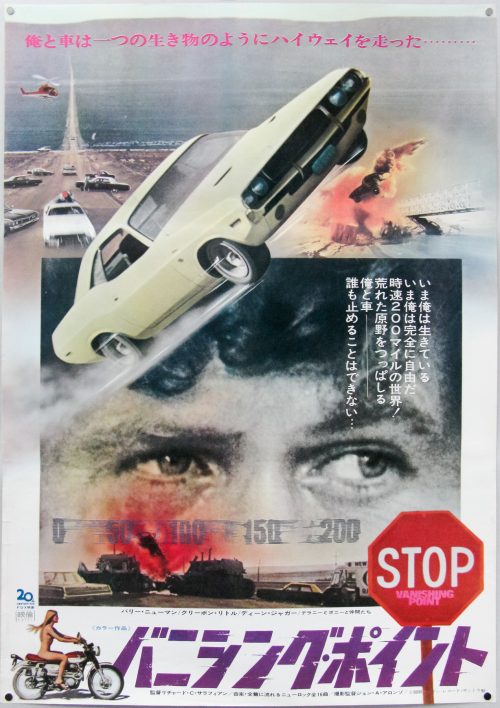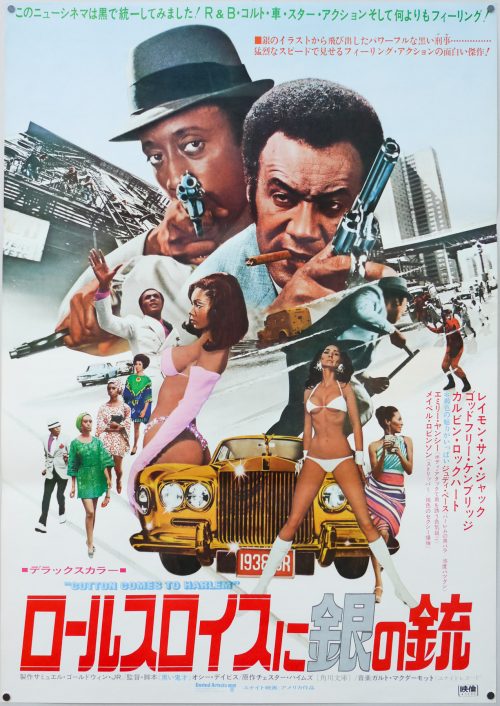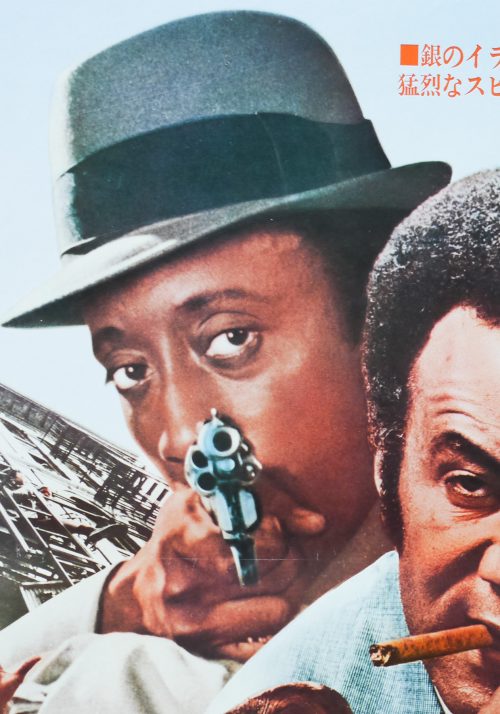- Title
- Vanishing Point
- AKA
- --
- Year of Film
- 1971
- Director
- Richard C. Sarafian
- Starring
- Barry Newman, Cleavon Little, Dean Jagger, Victoria Medlin, Paul Koslo, Robert Donner, Timothy Scott, Charlotte Rampling, Gilda Texter
- Origin of Film
- USA | UK
- Genre(s) of Film
- Barry Newman, Cleavon Little, Dean Jagger, Victoria Medlin, Paul Koslo, Robert Donner, Timothy Scott, Charlotte Rampling, Gilda Texter,
- Type of Poster
- B2
- Style of Poster
- --
- Origin of Poster
- Japan
- Year of Poster
- 1971
- Designer
- Unknown
- Artist
- --
- Size (inches)
- 20 6/16" x 28 12/16"
- SS or DS
- SS
- NSS #
- --
- Tagline
- --
The car’s the star on this Japanese poster for the classic 1971 road movie, Vanishing Point, starring the then unknown actor Barry Newman as the legendary delivery driver Kowalski. Tasked with driving a 1970 Dodge Challenger (R/T 440 Magnum) from Colorado to San Francisco, Kowalski accepts a bet that he can’t get the car to its destination in less than 15 hours.
After a run in with two motorcycle cops a pursuit commences and the driver does his best to stay on target and evade arrest, helped along the way by an enigmatic DJ named Super Soul (Cleavon Little). During the pursuit Kowalski meets an array of characters, including a snake-catching prospector (Dean Jagger), gun-toting gay hitchhikers and a hippie biker with a girlfriend who rides stark-naked (as featured on this poster).
There are actually two versions of the film and the one that was shown in the cinema in the UK is actually longer than the US cut, featuring an extra scene of a drug-taking hitchhiker played by British actor Charlotte Rampling. Both versions are available on the recently released blu-ray.
The film has had an undeniable cultural impact, influencing multiple other films and even musicians, with Brit group Primal Scream naming their 1997 album after the film and lead singer Bobby Gillespie saying that, “The music in the film is hippy music, so we thought, ‘Why not record some music that really reflects the mood of the film?’ It’s always been a favourite of the band, we love the air of paranoia and speed-freak righteousness … It’s a pure underground film, rammed with claustrophobia”
Quentin Tarantino‘s half of Grindhouse, Death Proof, continually references the film and features an almost identical Dodge Charger in one of its key car chases. I hadn’t realised but there was actually a TV remake of the film made in 1997 and starring Viggo Mortensen as Kowalski.
The original trailer is on YouTube.
































